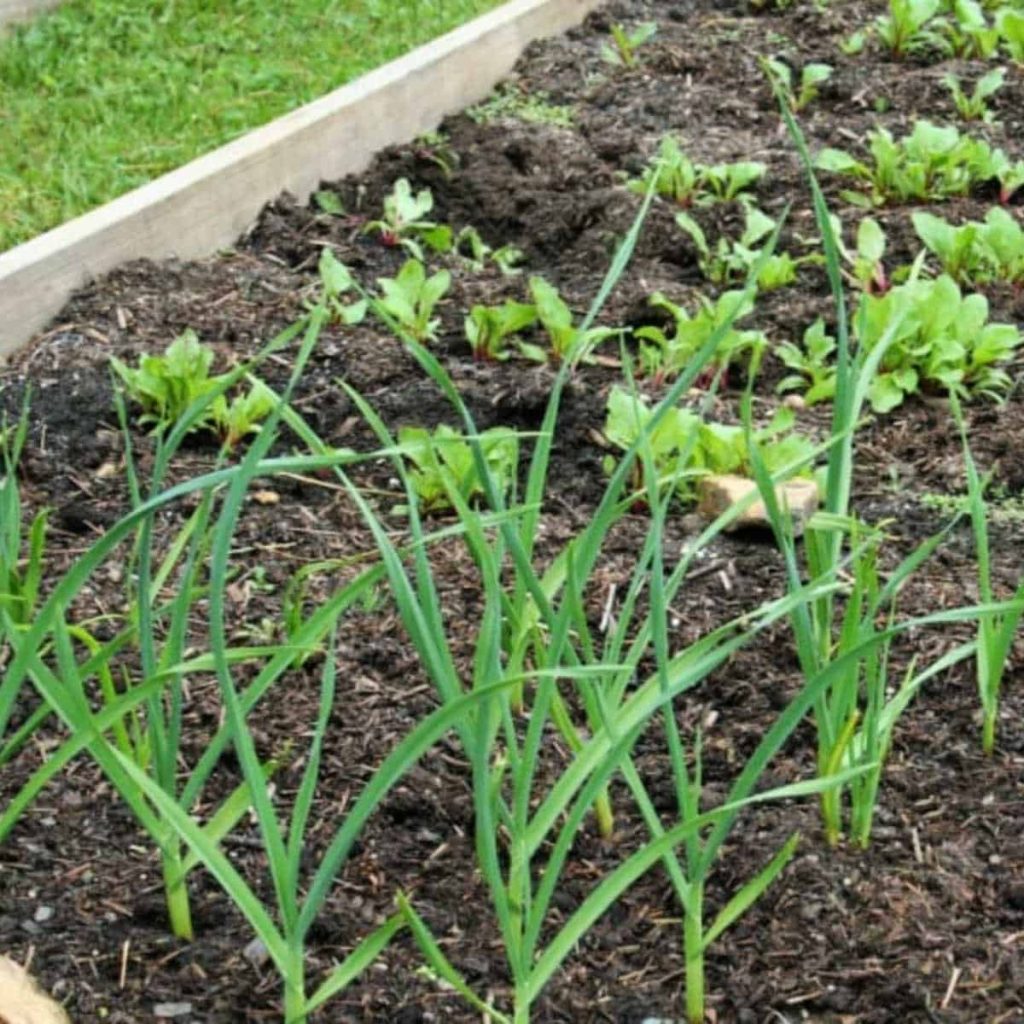Just when I thought I couldn’t find another more controversial gardening topic to write about, I stumbled into a whole hornet’s nest of controversy surrounding companion planting. Now for my black thumb friends out there – my lovely readers who are brand new to gardening – you may be scratching your head and wondering just what the heck companion planting is all about. Others are leaping from their computer in horror, making the sign of the cross and shouting, “No! No! Companion planting, a myth? But what about the great book Carrots Love Tomatoes?” and so on and so forth.

The issue surrounding companion planting isn’t the basic premise behind the idea that some plants grow well together; it’s the pseudoscience surrounding the concept of companion planting. Let’s take companion planting one step at a time before diving into the controversy.
What Is Companion Planting?
Companion planting is the idea that one type of plant benefits from being planted near another. The notion behind this gardening technique is that some plants exude chemicals naturally that repel insects, nourish the soil, or somehow “help” another species of plant.
Take tomatoes and marigolds, one of my favorite combinations, because it actually works. Marigolds offer a strongly scented chemical compound that naturally repels tomato hornworms. It works, it’s safe, and it’s a companion plant that looks pretty.
Does Companion Planting Work?
It does to some degree. Where the experts disagree with the folklore is in the actual effect and pairing of the plants.
Certain plants, as in my marigold example, do seem to work to repel insects. There’s also a concept in organic gardening parlance called trap crops, where plants are used like lures or traps to entice bugs to visit the sacrifice plant and leave the ones you want to grow alone. Like planting marigolds around tomatoes, these methods do work to some degree.
Don’t Fall for Hype: Use Companion Planting Wisely
The problem with many articles and books discussing this topic is that they take the concept to quasi-scientific levels. Plants do influence the soil around them, and they do influence surrounding plants. Plant a walnut tree and then try to plant flowers underneath; it quickly becomes apparent that “something” is at work that prevents flowers from growing under a walnut tree. That “something” is a known, measurable chemical exuded by walnuts that makes the soil unappealing and untenable for a wide range of plants. Again, in this example, there’s a measurable scientific explanation for why walnuts have this effect, just as the chemicals in marigold leaves and flowers can be measured.
Folklore Planting Schemes
Many gardeners rely upon folklore for planting schemes, and that’s where the experts at the Cooperative Extension and the university systems strongly disagree. Although nothing harmful will come from planning your garden according to moon phases, planting by crystals, and all sorts of folkloric traditions, nothing beneficial will happen, either.
Companion Plants & Their Scientific Backing
| Vegetable | Companion Plant | Benefit | Research Source |
|---|---|---|---|
| Tomato | Basil | Repels whiteflies, mosquitoes, spider mites, aphids | UCANR Companion Planting Division of Agriculture and Natural Resources |
| Carrot | Sage | Repels carrot fly | Old Farmer’s Almanac The Old Farmer’s Almanac |
| Corn | Beans | Beans fix nitrogen; corn provides structure | UMN Extension Extension at the University of Minnesota |
| Lettuce | Peas | Peas fix nitrogen, improving soil for lettuce | UCANR Companion Planting Division of Agriculture and Natural Resources |
| Potatoes | Garden Beans | Beans improve nitrogen availability | UCANR Companion Planting Division of Agriculture and Natural Resources |
| Cabbage | Sage | Reduces injury from cabbage moths | Old Farmer’s Almanac The Old Farmer’s Almanac |
| Sweet Corn | Cowpeas | Cowpeas fix nitrogen and suppress weeds | UMN Extension Extension at the University of Minnesota |
| Beans | Nasturtiums | Trap crop for aphids | Old Farmer’s Almanac The Old Farmer’s Almanac |
| Tomatoes | Marigolds | Repel nematodes and aphids | Old Farmer’s Almanac The Old Farmer’s Almanac |
| Squash | Corn & Beans (Three Sisters) | Corn supports beans; squash deters pests | UMN Extension Extension at the University of Minnesota |
If you are using companion planting schemes, be sure to use those backed by scientific evidence. Folklore is fun, and it can complement scientific methods of planting that create a healthy organic garden.





My plants really need a companion. One who will water and weed them and not let them die!! #blackthumbclub 🙂
What great tips!! I found out one year to never plant zucchini and pumpkins together. The zucchini were about 3.5 feet long and they tasted like pumpkin! 😛 #HomeMattersParty
Rabia! I will be thinking of you! I am member of #blackthumbclub too! But I just planted tomatoes, zucchini and some jalepeno so wish me LUCK!! Thanks for sharing Jeanne, #HomeMattersParty
You always have the best gardening tips & get me so excited for the season. Thanks so much for co-hosting! #HomeMattersParty
Aw you just made my day Michelle! Keep growing! 🙂 – Jeanne